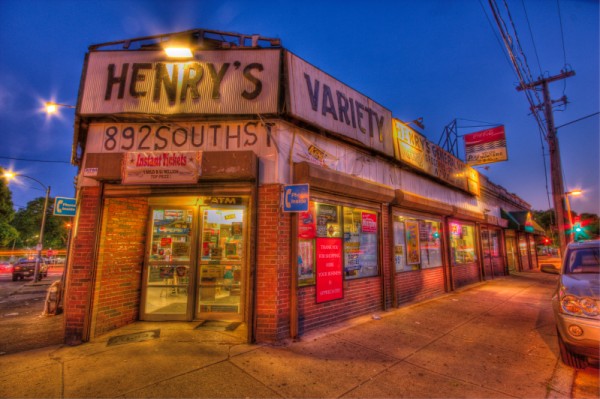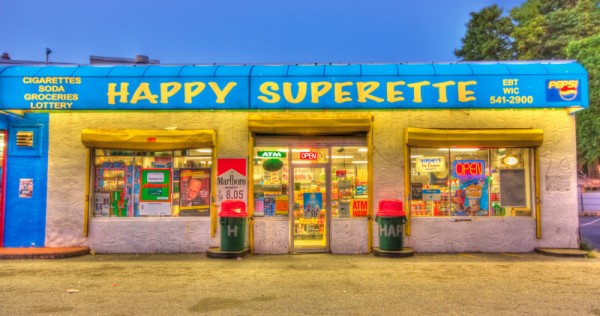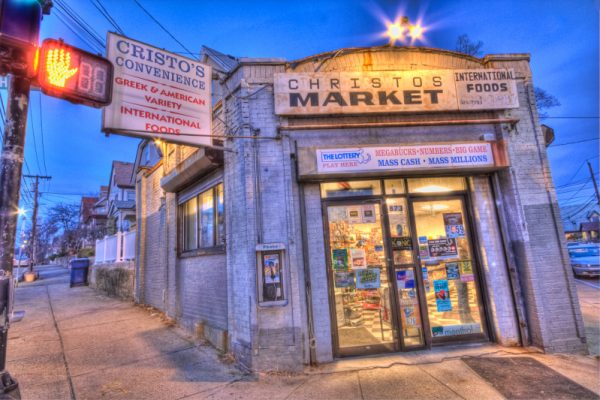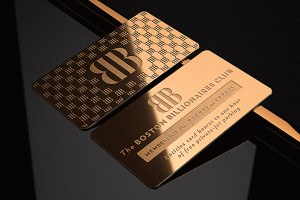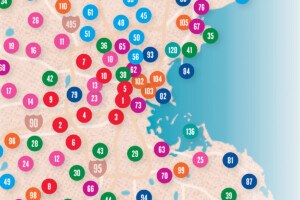Photographing the Boston Bodega, HDR Style
Peter Bates’s photos of Boston bodegas make these seemingly mundane mom-and-pop shops glitter like casinos on the Vegas strip. Using HDR photography, Bates gives the storefronts a surreal, almost heroic effect, and that’s part of his point. His hope is to not only elevate the status of the bodega in the city, but also to celebrate their owners, many of whom are first generation immigrants starting out in the States. Each colorful image is accompanied by a black-and-white portrait of its owner and their story: Where they came from, what their work means, and what they hope for the future.
Bates, who’s based in Roslindale, started shooting these storefronts in 2009, and his exhibit “How Convenient: Boston Bodegas and the Immigrant Experience” is on display in the Mayor’s Gallery on the fifth floor of City Hall through the end of September. Bates tells us a bit more about what drew him to celebrate the corner store.
What drew you to photograph bodegas?
I’ve always been attracted to colorful, unusual, and unique city scenes. I like photographing cities at night, more specifically at twilight. Right after sunset, I find an riveting mixture of natural and artificial light. However, cameras cannot capture the right amount of detail at that time in just one picture. HDR (high dynamic range) photography commonly involves taking three pictures at different levels of exposure, and then blending them through special software. It effectively balances the harsh contrast, opening up the details in the shadows and toning down excessive brightness (such as streetlights). It can also emphasize fine details in textures much more effectively than straight photography can, imparting a hyperrealistic look to the pictures. Some viewers claim the photographs look like paintings. A few even ask if they are paintings.
What about the bodega intrigues or inspires you?
Two things primarily. Artistically, they are ideal photo-documentary subjects. Some are even converted carriage houses from the last century. Since I don’t photograph chain-store bodegas like Store 24, the bodegas I choose are unique and have vivid signs that light up in the evenings. They also typify the neighborhoods in which they’re situated, like the Latin Market and Yessenia’s Market in Jamaica Plain’s Latin American section. Sociologically, they embody the American dream for people from Latin America, Asia, the Indian subcontinent, and other places. The people who own these bodegas work very hard, sometimes 12 hours a day, seven days a week to provide for their families and make it in America. Because of that they earn my admiration.
Why did you choose to shoot the owners in black and white?
First, I wanted to create a contrast between the large color photographs of the bodegas and the smaller portraits that accompany my interviews with the owners. Secondly, I like to photograph the owners in their stores. However, there is always a riot of colorful products in these stores, one that can distract from the owners’ portraits. Black and white is an effective filtering mechanism that focuses on the character of the owner rather than a package of Fritos.
What’s been the response from your subjects?
It is been mostly positive. The bodega owners who are the most responsive seem to want me to tell their stories. They want people to know how hard they’ve been working to support their families and provide for their communities. Some have been a bit wary at first, wondering why I could be interested in them. When I reassure them that it will not cost them anything and I will give them a free picture of their store, and I show them other interviews that I have done, most agree to talk to me. Some offer me refreshments, several have even hired me to photograph their family gatherings.
